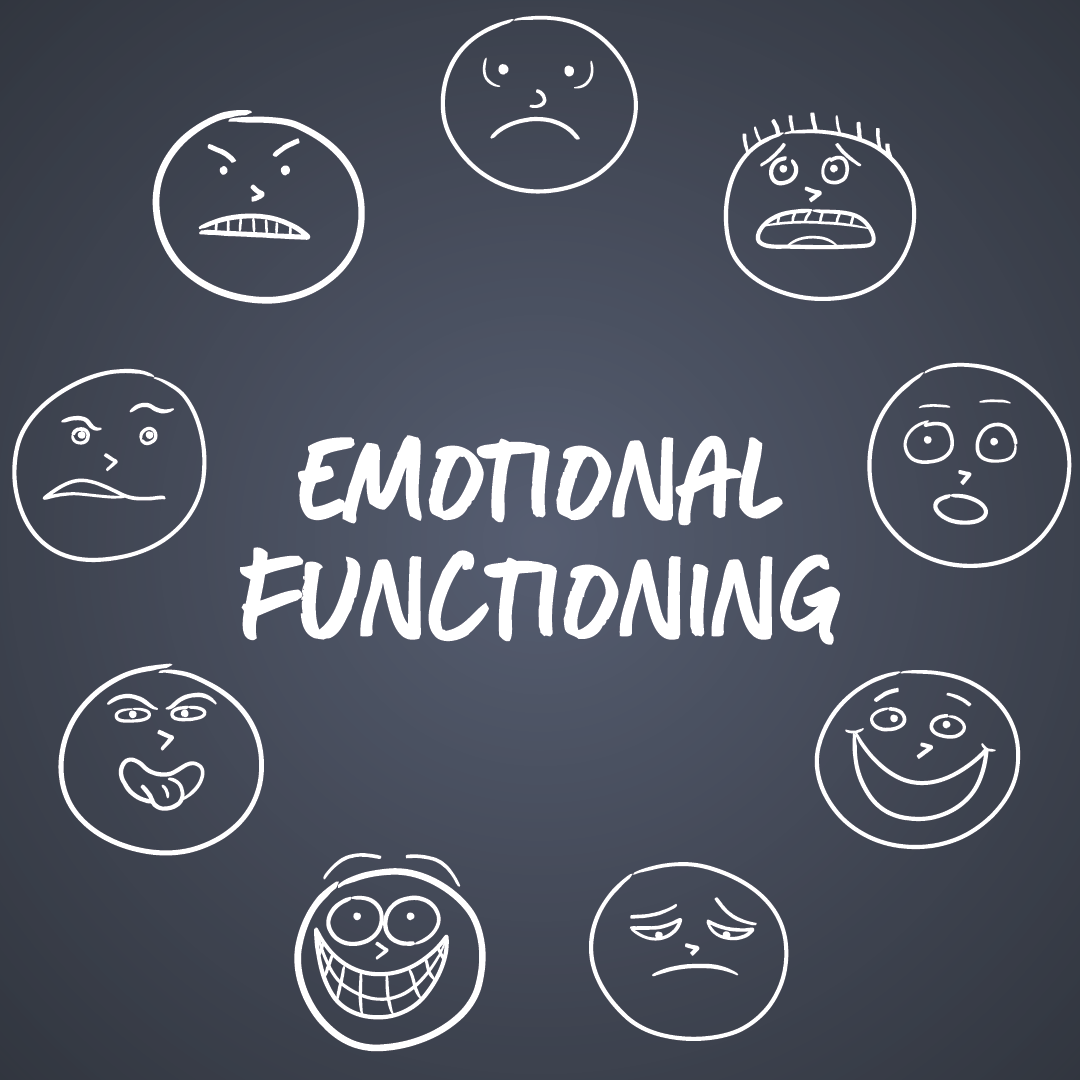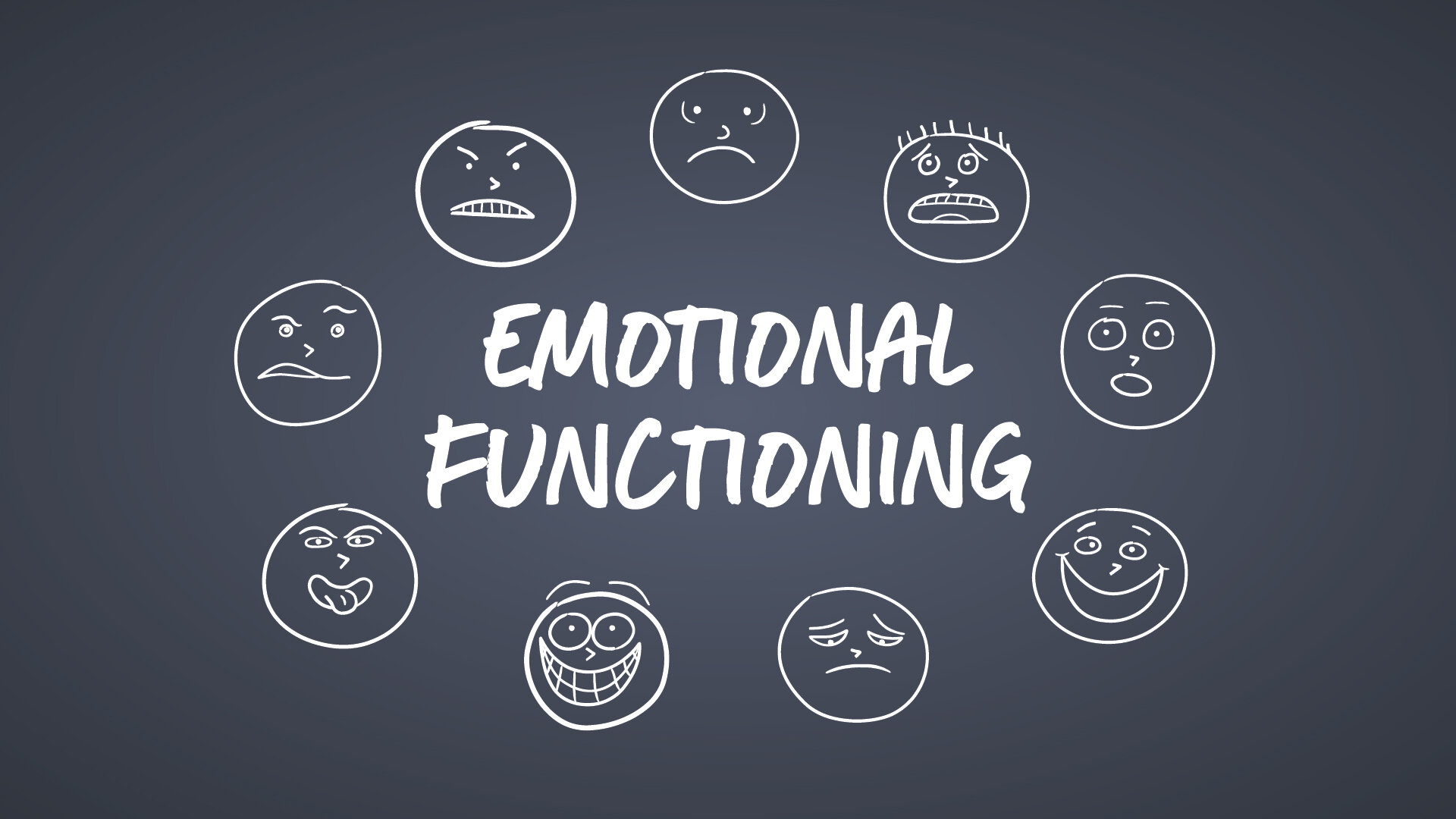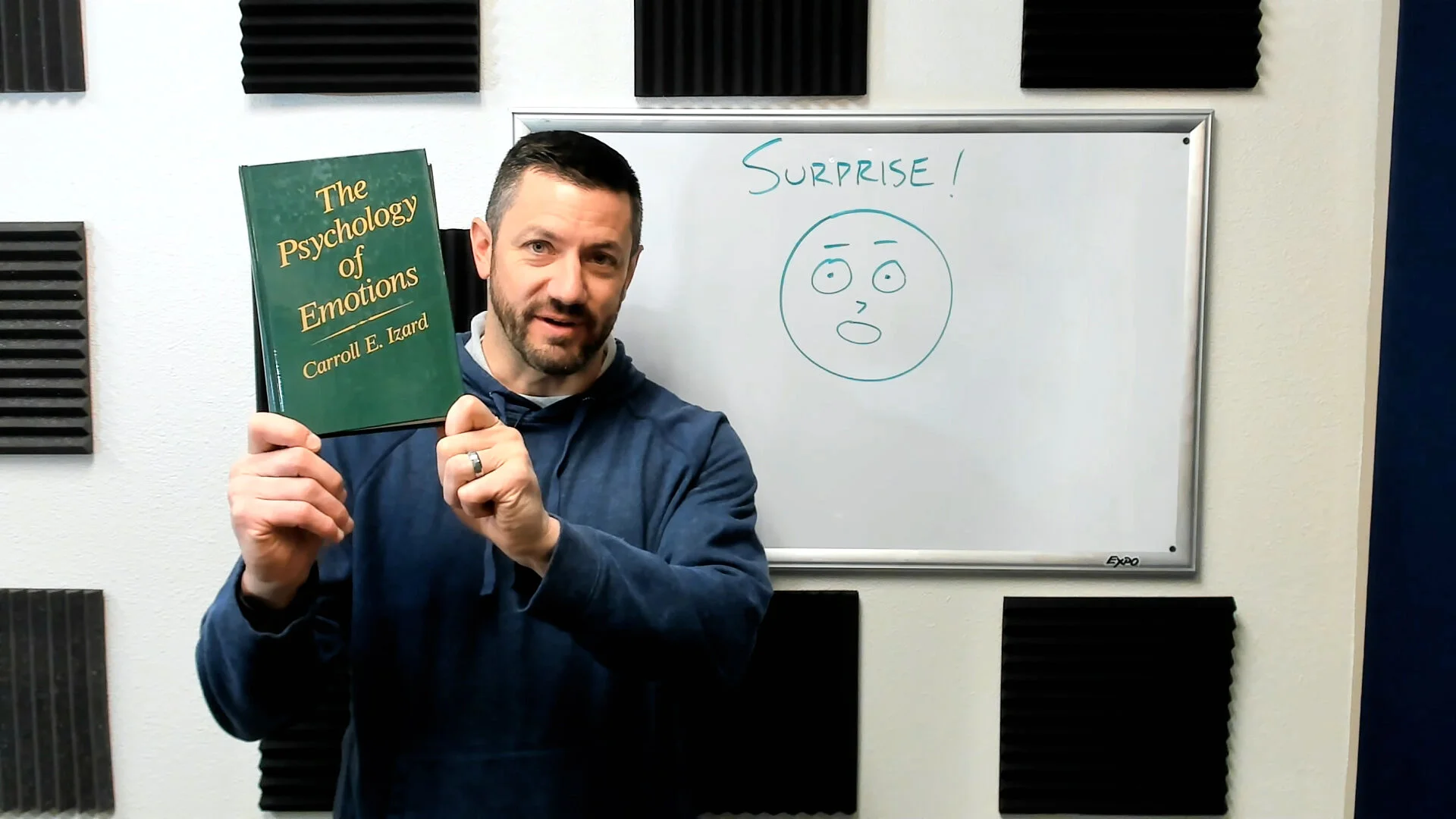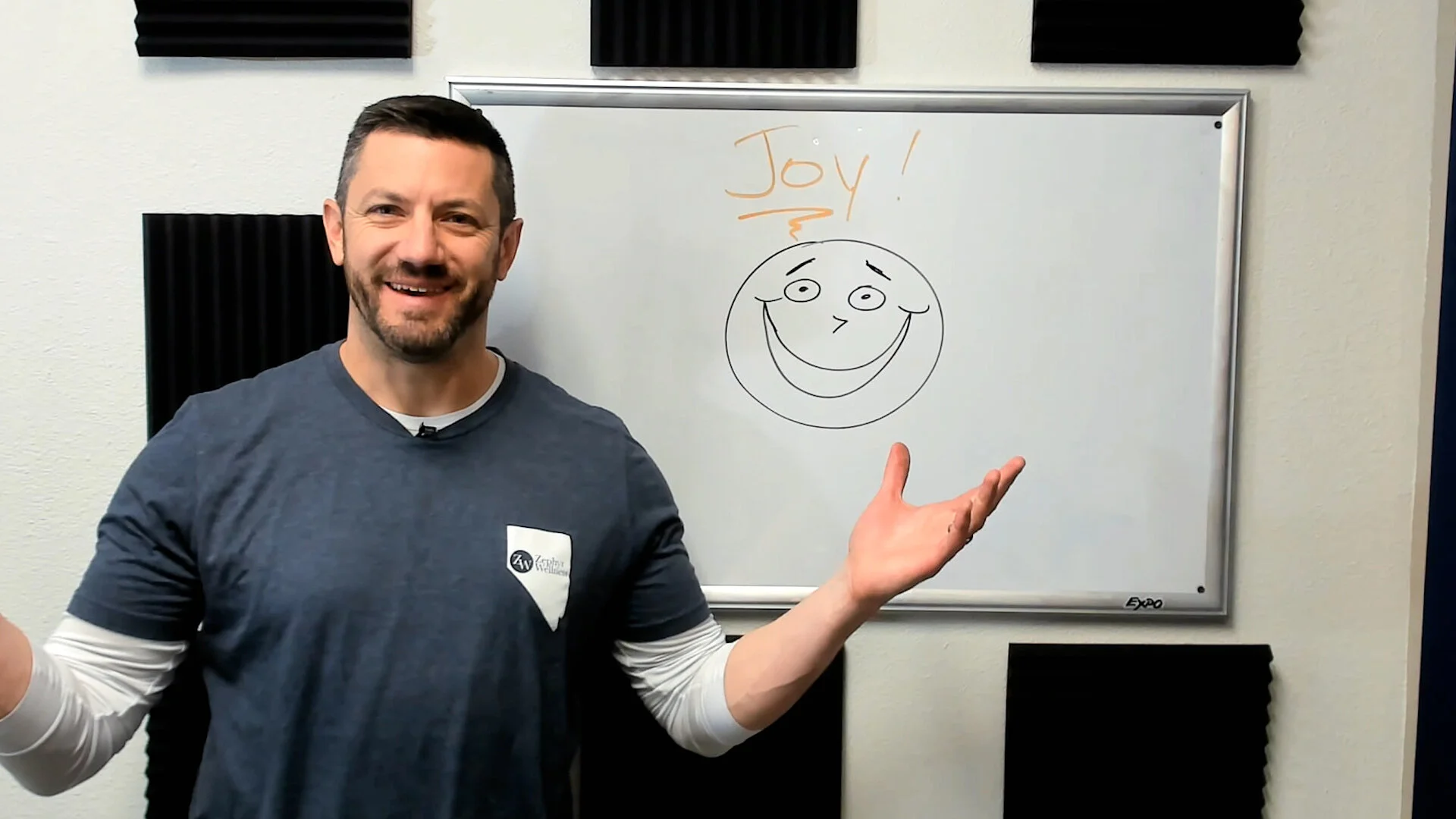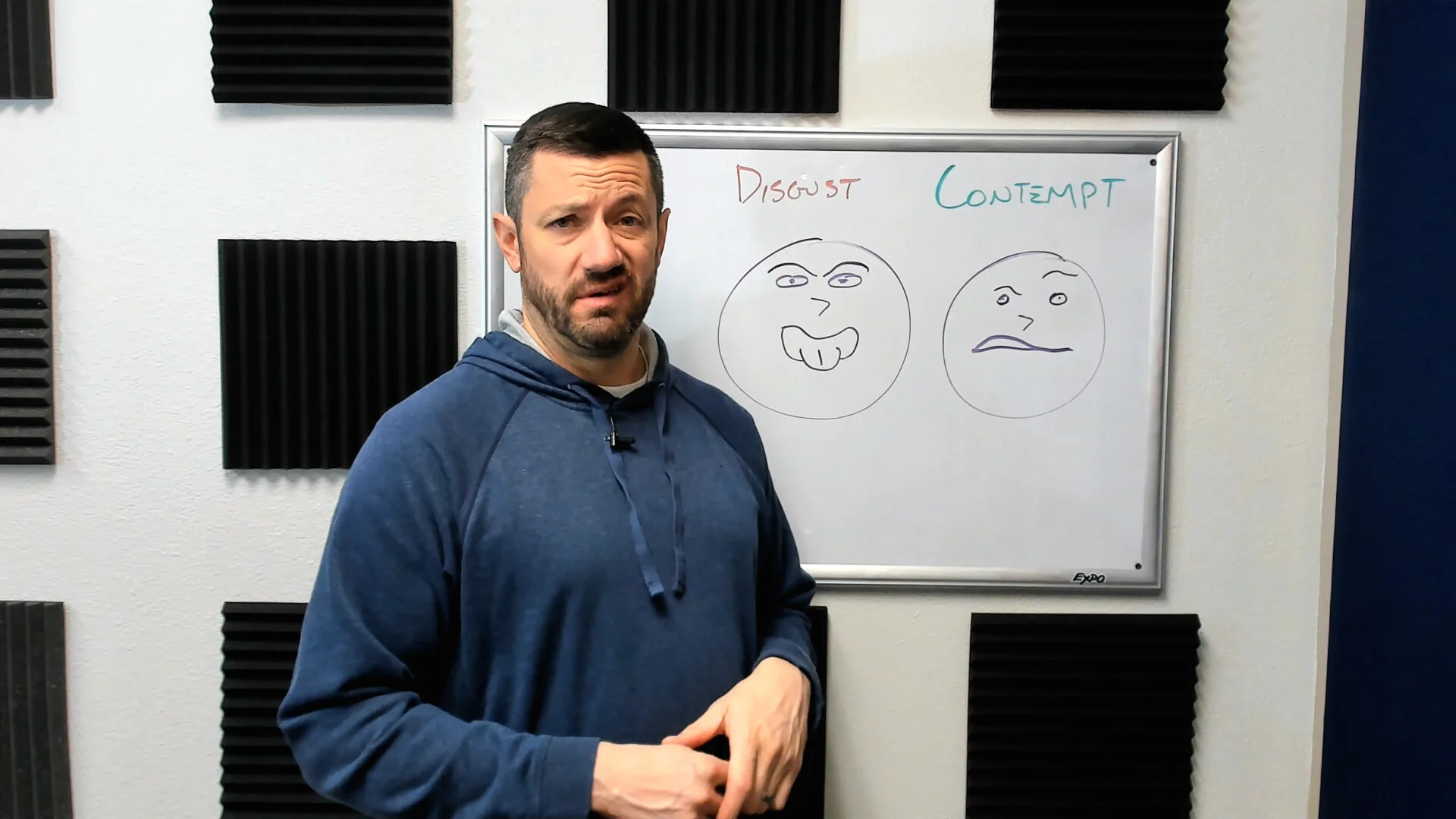Today, we're talking about emotional functioning! Understanding emotions can help you move through life with intention and compassion for yourself and others. You've probably heard the idea that there is a range of human emotion. Dr. Carroll Izard's research suggests that there are ten discrete core emotions that each serve a unique purpose. By understanding what our emotions are trying to tell us, we can accept them and address any problems that may arise.
Jump to…
Episode 1: An Overview
Episode 2: Anger
Episode 3: Sadness
Episode 4: Fear
Episode 5: Surprise
Episode 6: Joy
Episode 7: Shame & Guilt
Episode 8: Excitement
Episode 9: Disgust & Contempt
An Overview
In this overview, we'll briefly cover each of the core emotions and how people experience emotions physiologically. This is a great primer for anyone new to the idea of emotional functioning, and the concepts discussed here will be referenced in the following videos. The rest of the series will offer a deeper dive into each emotion.
Mentioned in this video
→ Our original emotional functioning videos: Part 1 & Part 2
→ The Psychology of Emotions by Carroll Izard
→ Inside Out
→ Dr. Christian Conte
Anger
In episode two of our Emotional Functioning series, we're talking about anger. Anger, like all other emotions, serves as a tool to motivate us to do something. Learn how you can notice your anger (or the emotion that anger is covering up), listen to what it's telling you, and move through your emotions in a way that is healthy and supportive.
Sadness
Today in our ongoing Emotional Functioning series, we're talking about sadness and trauma. Sadness is the least-tolerated emotion by our modern society, but it can be understood just like any other emotion. The purpose of sadness is to tell us that our expectations were not met. We talk about examples of what expectations we might have, how we are often socially conditioned to bail out of riding the emotional wave, and how trauma can occur.
Mentioned in this video
Fear
In part four of our Emotional Functioning series, we're talking about fear. Fear is easily understood as your brain's way of telling you that there is some sort of threat or danger. But did you know that you can trigger a fear response by seeing or anticipating something that made you fearful in the past? This can lead to anxiety or panic attacks. We can learn to tolerate our fear so we don't give over to these anxieties by acknowledging that we don't have control over future outcomes.
Mentioned in this video
→ Riding the "emotional wave"
→ How anger can cover up emotions like fear (road rage example)
Surprise
Today in our ongoing Emotional Functioning series, we're talking about surprise. Surprise is often referred to as the most fleeting emotion — the emotion that lasts the shortest period of time. Surprise serves as a kind of reboot mechanism to bring your attention to something unexpected that's happening. While surprise may not seem as powerful or important as some of the other core emotions, we can use surprise to better understand why we react the way we do to certain scenarios.
Mentioned in this video
→ Watch previous videos in our Emotional Functioning playlist
→ The Psychology of Human Emotions by Carroll Izard
→ Emotional Functioning - Fear
Joy
This week, we're talking about joy! Joy tells us to keep doing what we're doing. One of the most common ways to feel joy is from the accomplishment of a task. Your body releases happy chemicals so you feel good about achieving something and want to repeat that for the same feeling. Like other emotions, you can also feel joy by recalling another point where you felt happy. However, like all emotions, happiness is fleeting. Being happy all the time isn't realistic. Watch the full video to learn how our experiences can shape how we feel joy and how anyone can feel joy.
Mentioned in this video
→ Emotional Functioning Overview
→ Self-efficacy
→ Don't Should on Yourself
→ Gentlemen's Barber Shop in Reno
→ Emotional Functioning playlist
Shame & Guilt
Today, we're talking about shame and guilt — two emotions that are very distinct, but very closely related (especially in pop culture). All emotions serve a purpose to inform us of something, and that isn't inherently "good" or "bad." Somewhere along the way, if people start to live in a single emotion (for example, living in anger), that becomes a problem because the emotion is no longer informative and interferes with daily life. This is the root of why some people believe some emotions are "good" or "bad." We need to pull back and look at the root cause of the emotion to address it.
Shame's purpose is to tell us that we failed to meet somebody else's expectations. Guilt tells us to go make it right. In this video, we go over the evolutionary reason why shame and guilt were key to maintaining healthy communities, and how the modern landscape is making it easier for people to ignore shame and guilt despite those feelings being important and informative. We also discuss the shame-guilt cycle that can lead to people growing up with a deeply held sense of illegitimate shame caused by parents, teachers, or other authority figures in their life.
Mentioned in this video
→ Emotional Functioning playlist
→ Emotional Functioning - Sadness video
Excitement
Today, we're talking about the spectrum of excitement! This continuum encompasses feelings like interest, curiosity, and, of course, excitement. Excitement's purpose is to keep us awake and engaged in what we're doing.
From the early days of humankind, shared curiosity helped us develop bonds within a community. This is true in the modern-day, too (looking at areas like the classroom). Another helpful aspect of interest is that it fuels creativity. However, this powerful emotion of excitement is also what advertisers manipulate to encourage us to buy their product. It's perfectly fine to be excited about the next new iPhone as long as we can recognize our emotions and pause before acting on them.
Giving into impulses without thought is one way that excitement can go too far and be detrimental to our well-being. Mania, a component of bipolar disorder, is the extreme of what happens when we let excitement overtake us. Like all other emotions, excitement is good when it serves a purpose and we are able to recognize it. You're encouraged to reflect on this video and pay attention to the next time you feel excitement, curiosity, or interest!
Mentioned in this video
→ Emotional Functioning playlist
→ The Social Dilemma
→ Center for Humane Technology
Disgust & Contempt
Today we're talking about two sometimes related emotions — disgust and contempt. Disgust helps keep us alive by letting us know something is unhealthy. This is obvious with things like rotting meat or dog poop, but we can also experience ideological disgust.
Contempt serves as a self-preservation technique, meaning when we look at somebody else as though they're beneath us, we can protect ourself from a dangerous situation. Contempt is necessary for wars, imperialism, and colonization. It's very difficult to inflict pain on another person unless you think they're not like you. That's where contempt comes in.
When we cling too tightly to our beliefs, it becomes difficult to separate our selfhood or identity from our beliefs. This can lead to ideological disgust when we're faced with opposing viewpoints (originating from a perceived threat to our identity), which can quickly escalate to contempt for another person. Be mindful of your disgust response, particularly when it's a reaction to somebody's beliefs. Ask yourself — is the belief you're reacting to truly harmful? Particularly online, are you speaking to add value to the conversation, or are you squawking to protect your own tightly-held beliefs and projections?
This is our final video in our emotional functioning series! Thank you for watching.
Mentioned in this video
→ Emotional Functioning playlist
→ The Psychology of Emotions by Carroll Izard
→ Emotional Functioning - Surprise
→ Dr. Christian Conte

